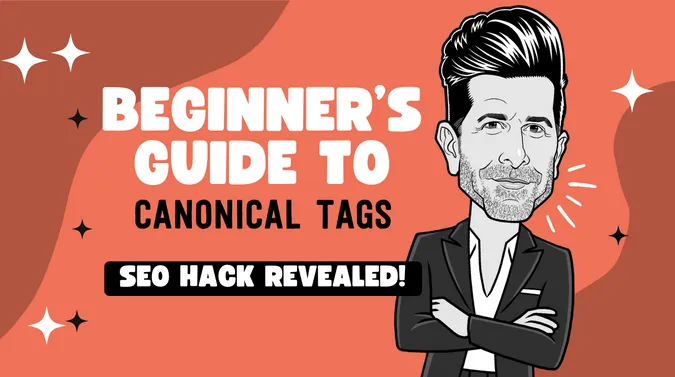Canonical URLs: A Beginner’s Guide to Canonical Tags
In the ever-evolving world of Search Engine Optimization (SEO), understanding the nuances of how search engines index and rank web pages is crucial. One such nuance is the use of canonical URLs. These URLs play a pivotal role in helping search engines understand which web page is the ‘master’ copy among duplicates or similar pages. This guide will delve into the concept of canonical URLs and tags, offering a beginner-friendly approach to mastering this important SEO element.
What is a Canonical URL?
A canonical URL is essentially the preferred version of a set of web pages with highly similar or duplicate content. For instance, if you have two pages on your website with content that is almost identical, choosing one as the canonical URL tells search engines which version to prioritize in search results. This is crucial for avoiding issues related to duplicate content, which can dilute your website’s SEO effectiveness.
Canonical Link Examples
Imagine you have a product page that is accessible via multiple URLs due to different color options. A canonical link in this scenario would look something like this in the HTML code of the non-canonical pages:
<link rel="canonical" href="https://www.example.com/product-page/" />
This tag tells search engines that the page at the specified href is the one that should be indexed, helping to consolidate search ranking power in a single URL.
Does Every Page Need a Canonical Tag?
Not every page requires a canonical. However, it’s a good practice to include them, especially in cases where duplicate or similar content exists. It’s a proactive way to tell search engines which page you consider to be the most important or relevant, thereby guiding the indexing process more effectively.
How-To Guide for Canonical Tags on Various Platforms
Different platforms have unique ways of handling canonical tags. Let’s look at how to implement these in Shopify, Magento, and WordPress.
Shopify Canonical Setup

Applying a canonical tag in Shopify involves a few steps:
- Log into your Shopify Admin Panel: Access your Shopify store by logging in with your credentials.
- Navigate to Online Store: Once in the admin panel, click on ‘Online Store’ which is located in the left-hand sidebar.
- Edit Your Theme Code: Select the theme you are currently using and click on ‘Actions’. Then, choose ‘Edit code’ from the dropdown menu.
- Locate the Right File: In the theme editor, you need to find the template file you want to edit. For product pages, this is usually
product.liquidorproduct-template.liquid. For other pages, it might bepage.liquidor a specific template file. - Insert the Canonical Tag: In the chosen .liquid file, locate the
<head>section. Here, you’ll insert the canonical tag code.For example:<link rel="canonical" href="https://www.yourshopifystore.com/your-preferred-page/"/>
Replace the URL in the
hrefattribute with the absolute URL of the page you want to set as the canonical page. - Save Your Changes: After inserting the tag, save your changes and close the editor.
- Review the Change: Visit the page you edited and view the page source to confirm that the canonical tag is present in the
<head>section.
Alternatively, you can install a Shopify App which will allow you to implement Canonical Tags without editing the theme files (in-case you don’t feel comfortable). Here is a link to the Shopify App directory where you can review the Apps available.
Magento Canonical Setup

In Magento, the process to apply canonical tags is more straightforward due to built-in support:
- Log into Magento Admin Panel: Start by logging into the backend of your Magento store.
- Access the Configuration Settings: Navigate to ‘Stores’ on the main menu. Under ‘Settings’, select ‘Configuration’.
- Go to Catalog Settings: In the Configuration menu, under ‘Catalog’, click on ‘Catalog’ to access catalog settings.
- Search Engine Optimization Settings: Scroll down to find the ‘Search Engine Optimization’ section.
- Set Canonical Tags for Products and Categories: Here, you will find two options: ‘Use Canonical Link Meta Tag For Categories’ and ‘Use Canonical Link Meta Tag For Products’. Set both of these options to ‘Yes’.
- Save the Configuration: After making these changes, click ‘Save Config’ at the top of the page.
- Clear the Cache: If your Magento store uses caching, you should clear the cache to ensure your changes take effect. This can typically be done from the ‘System’ menu under ‘Cache Management’.
WordPress Canonical Setup

WordPress users can apply canonical tags using SEO plugins like Yoast SEO. Once the plugin is installed, it typically adds canonical tags automatically. However, you can manually edit these tags in the Yoast SEO section of each page or post editor, ensuring that the correct canonical URL is in place.
How Canonical Tags fix Duplicate Content
An often-overlooked yet critical challenge in SEO is managing duplicate content on a website. Duplicate content can confuse search engines, as they struggle to determine which version of similar content to index and rank. This is where canonical tags come into play as a powerful solution. By specifying a canonical URL, you effectively communicate to search engines which version of a page is the ‘master’ or preferred one. This instruction is crucial when you have identical or very similar content across multiple pages. Canonical tags consolidate your SEO efforts, ensuring that all the link equity is directed to the preferred page. This not only clarifies the indexing process for search engines but also boosts the SEO potential of your primary content, safeguarding it against the dilution of visibility and ranking power that duplicate content can cause. In essence, canonical tags act as a guiding beacon for search engines, helping them navigate through similar content and focus on what you deem most important.
Summarizing the Impact of Canonical URLs on SEO
Canonical URLs and tags are vital components of a robust SEO strategy. They help search engines understand the hierarchy and relevance of your web pages, especially when dealing with duplicate or similar content. While implementing canonical tags might seem daunting at first, following the guidelines for platforms like Shopify, Magento, and WordPress makes the process straightforward. For more complex SEO strategies and personalized advice, consider seeking Search Engine Optimization Consulting. Additionally, never underestimate the power of on-page SEO in boosting your website’s search engine rankings.







Leave a Reply
Want to join the discussion?Feel free to contribute!